Everything you need to know about the Mercedes-Benz EQV
This week Chris borrows a Mercedes-Benz EQV, the fully electric variant of the V-Class. Chris talks us through his experiences and addresses common concerns of those considering purchasing or running an electric vehicle as their next car.
Introducing the EQV
The Mercedes-Benz EQV is Mercedes’ first all-electric MPV. The EQV is based on the luxury V-Class, a well renowned and established MPV. EQV adds some design elements especially for the EQ family such as the black panel radiator grille, EQ alloy wheels and badges.
Inside the EQV has a beautiful cabin with luxury materials, heated seats, a glass MBUX touch screen display, aluminium trims and configurable ambient lighting.
The EQV uses a 150kW (201bhp) electric motor with a 90kW battery. This propels the EQV from 0-62mph in 12.1 seconds whilst also having a range of 213 miles. Using a rapid charger the battery can be recharged from 10-80% in 45 minutes.
Find out more about the EQV with Inchcape.

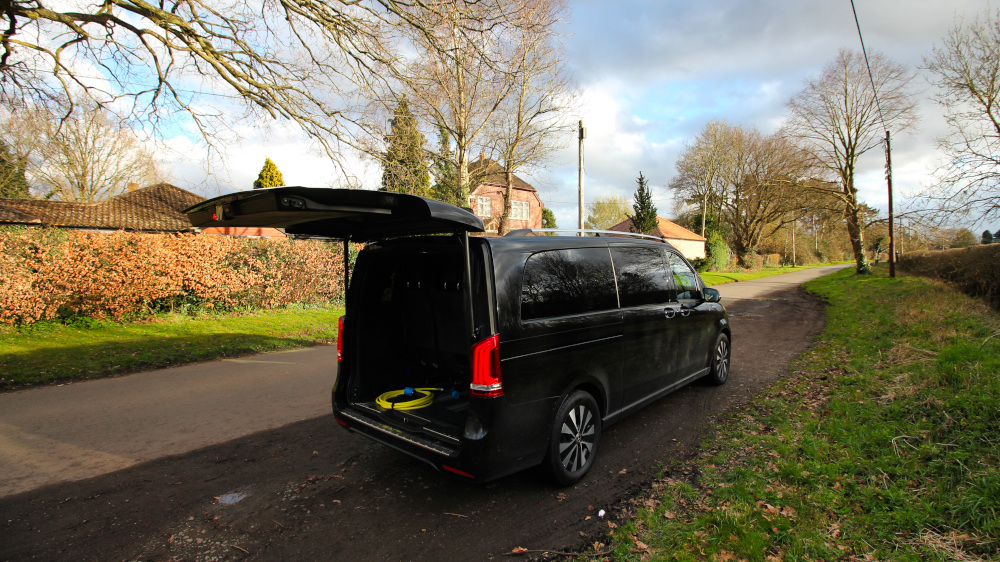
Living with an EQV
Having never driven anything larger than an SUV before I was apprehensive about driving the EQV, but these feelings passed immediately. Even just negotiating the carpark of Inchcape Mercedes-Benz Coventry, the 360 camera and effortless steering made it easy to drive. This is helped further by the car like interior and controls similar to any other Mercedes product. You feel very at home and comfortable in the cabin of the EQV.
On the open road the instant torque of the electric motor makes it easier and gives you the confidence to pull out of junctions and roundabouts compared to when driving other MPVs. The silence of the motor also adds a further element to the luxury and relaxing feel of the EQV.
I was also impressed when cutting across country back from Coventry that the EQV’s range barely decreased at all due to the regen braking charging the battery at every corner and compensating for the energy used on the straights. The EQV also reads the traffic situation ahead and can automatically start regen braking to increase the efficiency of your driving style and minimise wasting energy.
The Mercedes-Benz EQV has several driving modes including; S, C, E and E+. S provides a sporty driving experience, with a more responsive throttle and access to full performance. C provides a middle ground with full power accessible and the heating and aircon but with a more efficient throttle response. E offers 2/3 the power with a kickdown mode for 100% and limits some of the interior creature comforts. Whilst E+ offers limited power and reduces the power of the climate control to maximise efficiency.
There are also three different recuperation modes or braking regen levels. D--, D- and D. These are controlled via paddles behind the steering wheel. D—provides maximum regeneration to the point you often only need to touch the brake pedal when slowing down for the last 5mph to 0. D is the least rigorous and allows the EQV to sail and not use any power. On one trip I managed to generate 5 miles of extra electricity from the regen braking.
To call the EQV an MPV almost feels an insult, walking up to it the tinted windows, diamond cut alloy wheels and chrome trims all add to a classy look. Whilst its practical it stays true to its Mercedes DNA. Inside the leather, aluminium trims, large 10.25” central touchscreen, electrically adjusted seats, ambient lighting and electric sliding doors and tailgate all continue to build the sense of luxury. It felt more like sitting in a premium car than an MPV.
Charging Process
No you don’t, in fact the quickest charging happens between approx. 10-80%, so frequent top ups within this range can be more convenient and preserve battery health. Within 10-80% using a rapid charger the EQV takes just 45 minutes to charge.
Fully charging the battery will however give you the maximum range but will take longer. The battery is designed to last the lifetime of the car even with frequent charges outside of the 20-80% range.
To charge the EQV simply open the charging port which looks like a fuel cap on the front bumper on the passenger side (this means you need to drive up forwards to chargers) and either use the charging cable supplied with the car or the charging cable attached to the charging station. Then insert the cable into the car. Follow the instructions on the charging station such as payment instructions and confirmation, then check the car is charging. The status light around the charging port should illuminate green and the dashboard will give a prediction of when the battery will be fully charged.
Lock the car and leave it to charge. When returning simply unlock the car and use the unlock button next to the charging port to remove the cable. If the cable belongs to the car return to the boot.
To work out the cost to charge your car, check the battery’s capacity and your electricity rate. For the EQV this is 90kW and for myself 11p per kwh. 0.11 x 90 = £9.90 for a range of up to 213 miles. Therefore, every mile costs 5.1p. Whereas in a regular V-Class achieving 37.7mpg it could cost approx. 20p per mile.
At a public charger the costs can vary. Some are free for customers such as Pod-Points at Tesco. Whereas others can cost money, using apps such as Pod-Point and Zap-Map you can see nearby chargers, if they are available and how much they cost. Quite a common cost for public chargers was 30p per kWh or a flat rate connection fee often around £1 then free after. The rapid chargers I found at service stations also cost around 30p per kWh which whilst costing more than at home is much quicker to charge and still costs less than running a combustion engine car.
For it to be practical to run an electric car and charge it from home you need a wallbox, as using a 7kW wallbox will charge the EQV in 13 hours which fits into daily life. Whereas, using a 3-pin plug would take 39 hours.
Using a 22kW charger found in some public and work locations would take 8 hours to recharge. Finally a 50kW rapid charger would take 70 minutes from 20-80% and a 150kW would take 30 minutes for the same charge.
Therefore charging an EQV does not need to be an inconvenience, but it can be easier and more practical to not allow the EQV to loose its charge completely as charging from 0% takes longer than topping up.
The EQV can be charged with a Type 2 connector at home, work or at a public charging point. There is also a CCS connector for rapid charging. The Mercedes EQV supports rapid charging up to 110kW.
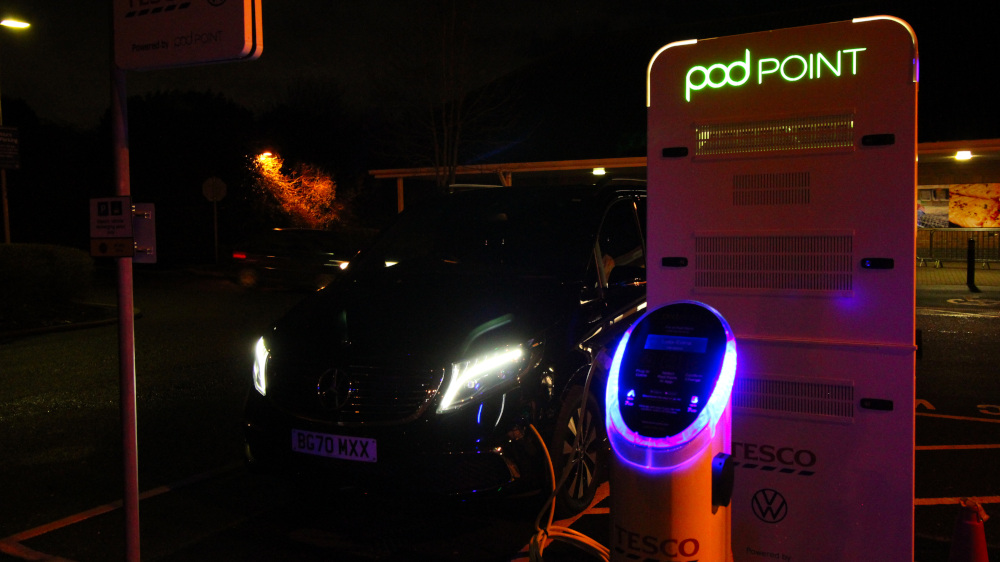
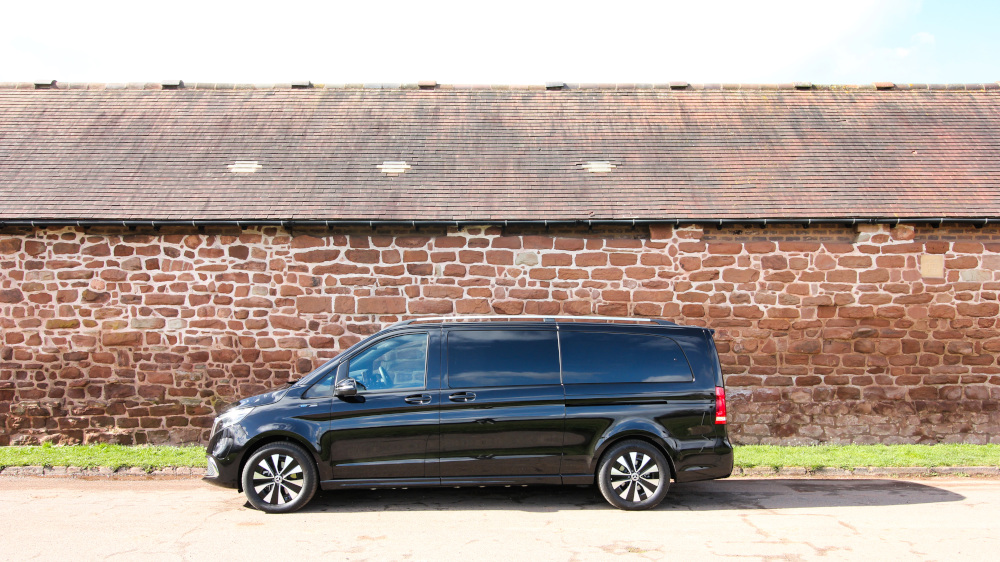
Benefits Vs V-Class
There are several advantages to the EQV vs the regular V-Class. These include the savings of running an electric car with lower BIK rates, lower road tax, £0 low emission zone charges, lower fuel costs and lower servicing costs.
Secondly there is the advantage of the electric drivetrain which provides instant torque and silence which adds to the feeling of luxury in the EQV.
Yet there are very few compromises with the EQV compared to the V-Class. The interior space is very similar, it still has all the luxury if not more than the V-Class. The main compromise would be the higher list price however the cost savings of running the EQV in the long run may mean you are better off.
Another advantage of the EQV vs the V-Class is that the running and servicing costs should be lower. Electric cars are often cheaper so service as they feature fewer moving parts so there are less consumables to be replaced. Moreover, components such as the brakes last longer as they are used less due to the regen braking.
The EQV has a reported range of 213 miles, I drove 160 miles in the time I had the car and returned it with 35% charge in the battery. This was in relatively cold conditions and with a mix of driving, some on the motorway which can use the battery up quicker due to the power and demand and lack of regen braking opportunities.
I was really impressed with the range especially on A and B roads on which the battery barely depleted due to the tops up it was receiving from regen braking for corners. I would think in the real world 200 miles plus would be achievable.
Purchase, Tax and Grants
The Mercedes- EQV is eligible for the Electric Vehicle Homecharge Scheme (EVHS) grant due to its list price, but this still allows for a 75% contribution to the cost of installation and purchase of a charging wallbox.
The EQV also benefits from £0 year 1 road tax and £0 London Congestion Charge and Ultra Low Emission Zones Charges.
BIK rates are also low at 0% for 2020/21, 1% 2021/22 and 2% 2022/23. This provides a large cost saving when a regular V-Class with a BIK rate of 37% upwards.
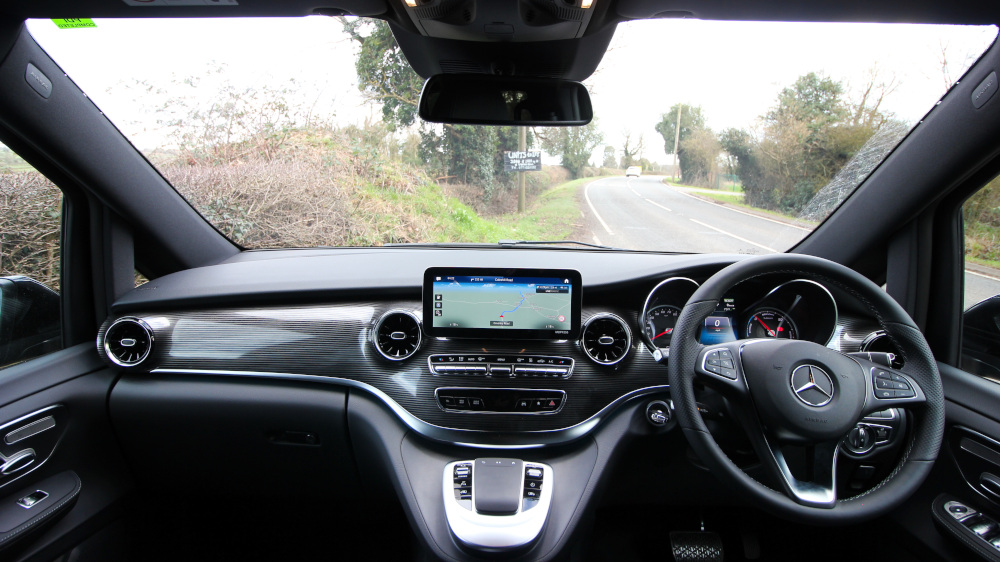

A Showcase of Technology
The EQV is packed with technology making it more efficient, luxurious, or easier to drive.
Features such as the three mode regen braking which could be manually adjusted or left in automatic mode in which radars and cameras would read the road ahead and use GPS data to kick the regen braking in when appropriate to prevent wasting as much braking energy as possible. The same systems can also help prevent accidents by helping to detect potential collisions and warning the driver or initiating braking.
The Driver Assistance Package which includes adaptive cruise control and lane keeping assist, makes long distance driving easier and safer. Whilst the Mulitbeam LED headlights adapt to the road, traffic and weather situations to provide optimal illumination without dazzling other drivers.
The electric sliding doors and tailgate are both operable from the key and added a feel of effortless luxury to the EQV. Although I did question the use of electricity in an electric vehicle.
The most useful feature for me was the 360 Degree Camera which made manoeuvres much easier and I was able to park more precisely. The bird’s-eye view was really useful especially when getting used to the size of the EQV in confined spaces, such as when parking or the drive thru.
Interior Versatility
The EQV has the same interior versatility as the V-Class with three rows of seating and endless configurations. The V-Class can be turned into an eight seater or a luxury six seater. With the seat rail system the seat benches can be removed, added or moved within the cabin to configure the EQV to suit your needs such as for more luggage space, passenger capacity or luxury.
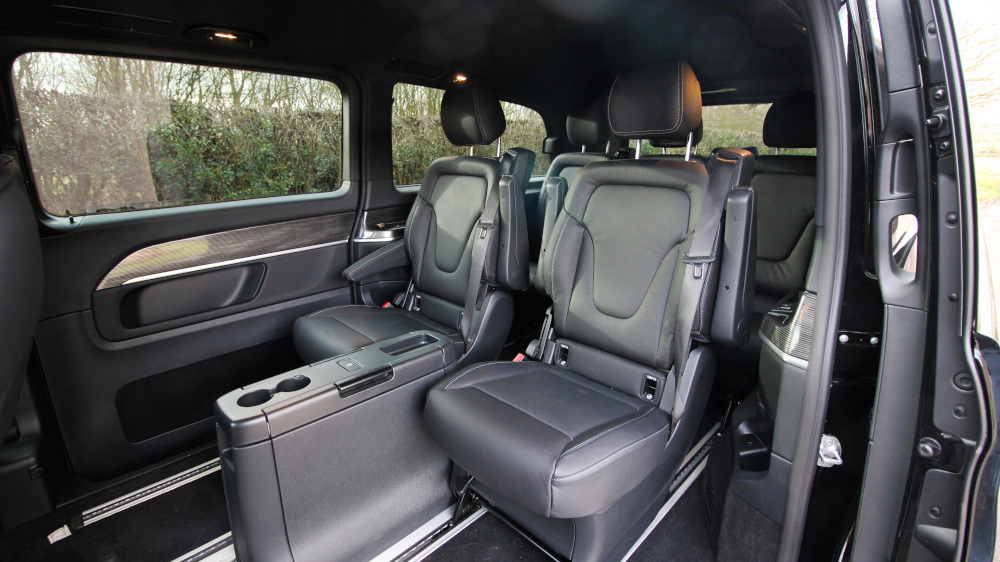
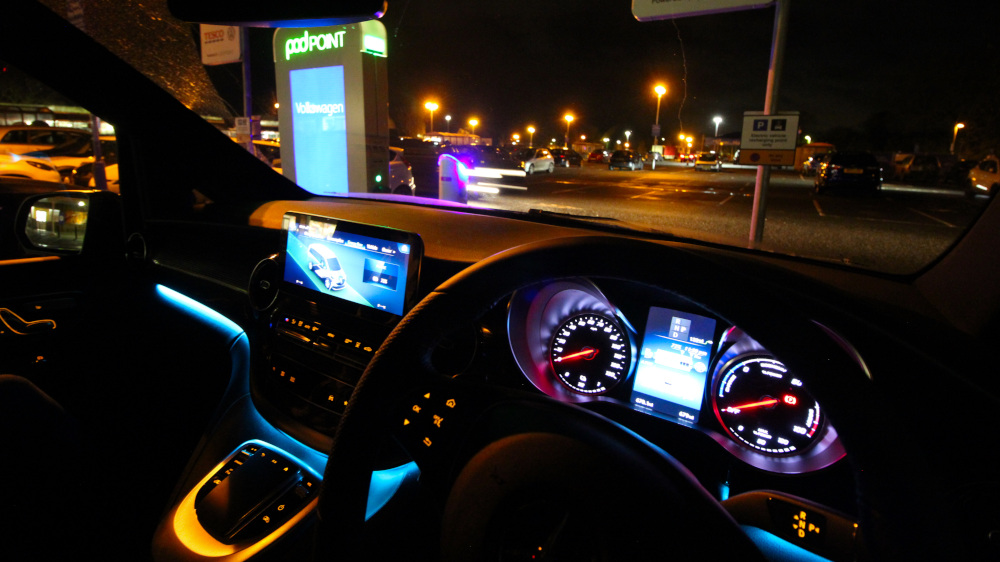
Summary
In summary the EQV was impressive, with its practical long range, instant torque and feeling of luxury representative of the Mercedes-Benz brand. In some ways this is no MPV, it offers the practically and versatility of an MPV with the features and luxury of a premium car.
Enquire now for the latest offers, to ask any questions or to book a test drive.
 Used Mercedes-Benz
View our selection of approved used Mercedes-Benz cars at Group 1
Approved Used Mercedes-Benz
Used Mercedes-Benz
View our selection of approved used Mercedes-Benz cars at Group 1
Approved Used Mercedes-Benz
 Order your new Mercedes-Benz online
View our selection of brand new Mercedes-Benz cars at Group 1
Browse New Cars
Order your new Mercedes-Benz online
View our selection of brand new Mercedes-Benz cars at Group 1
Browse New Cars



